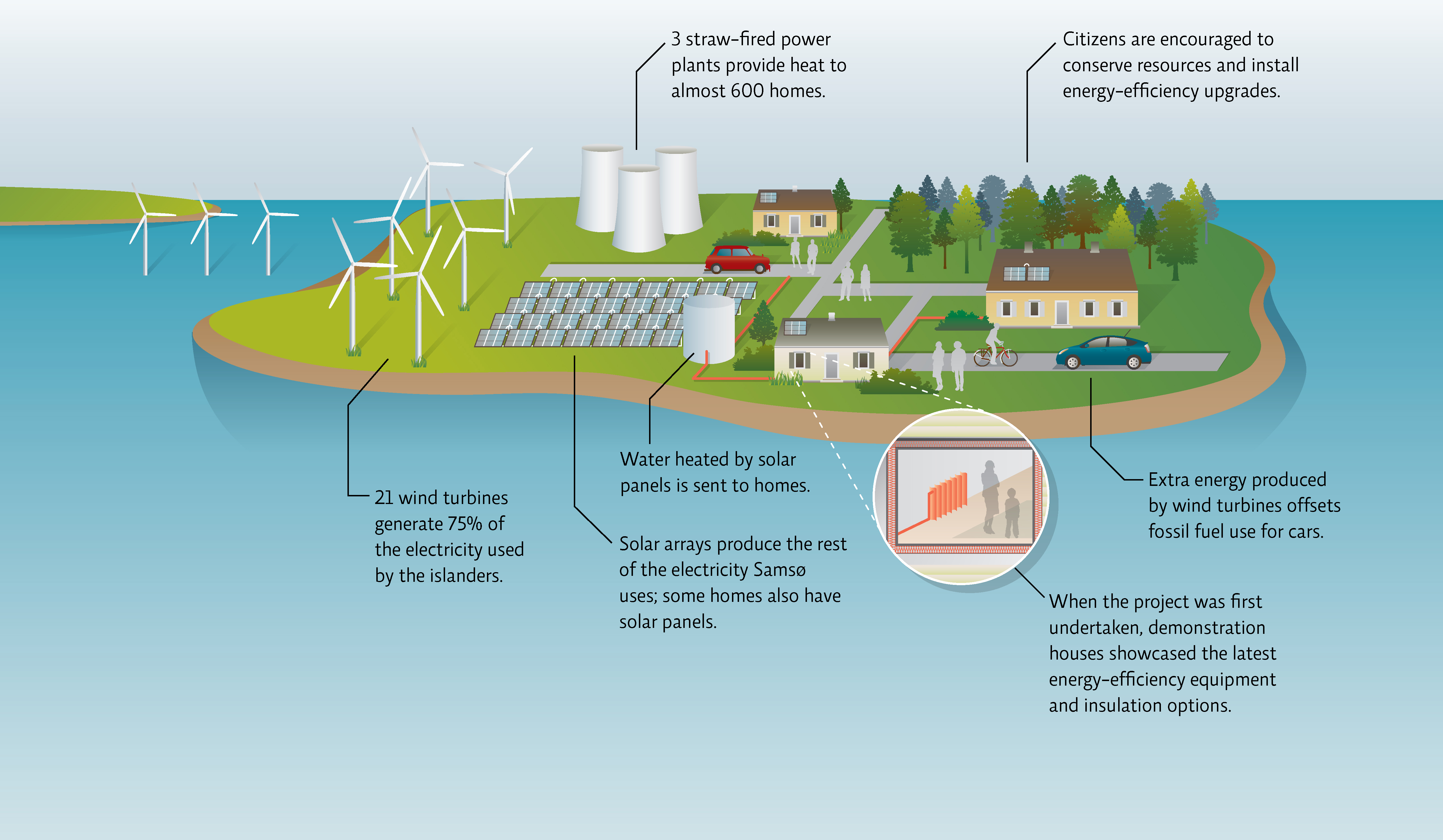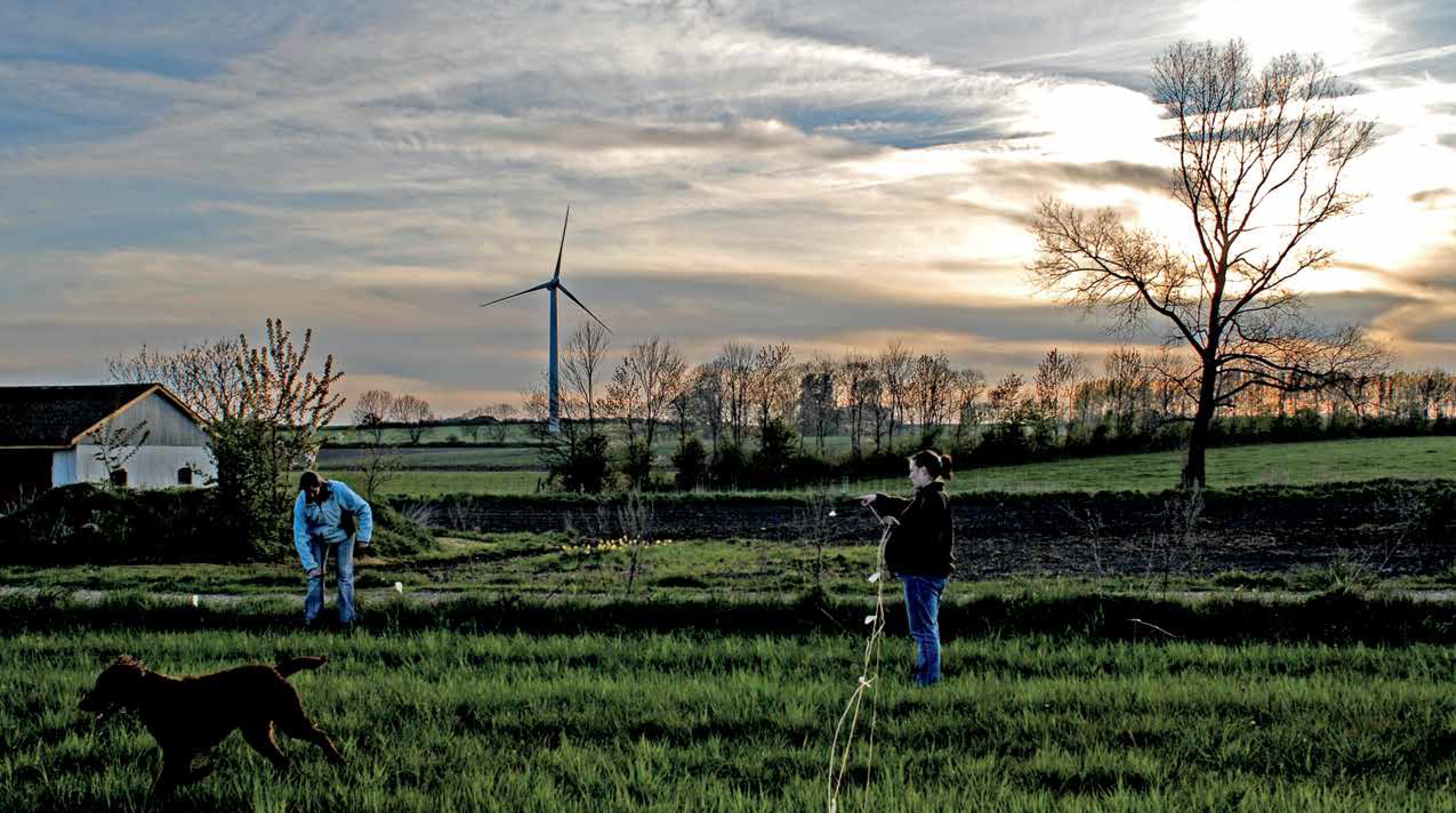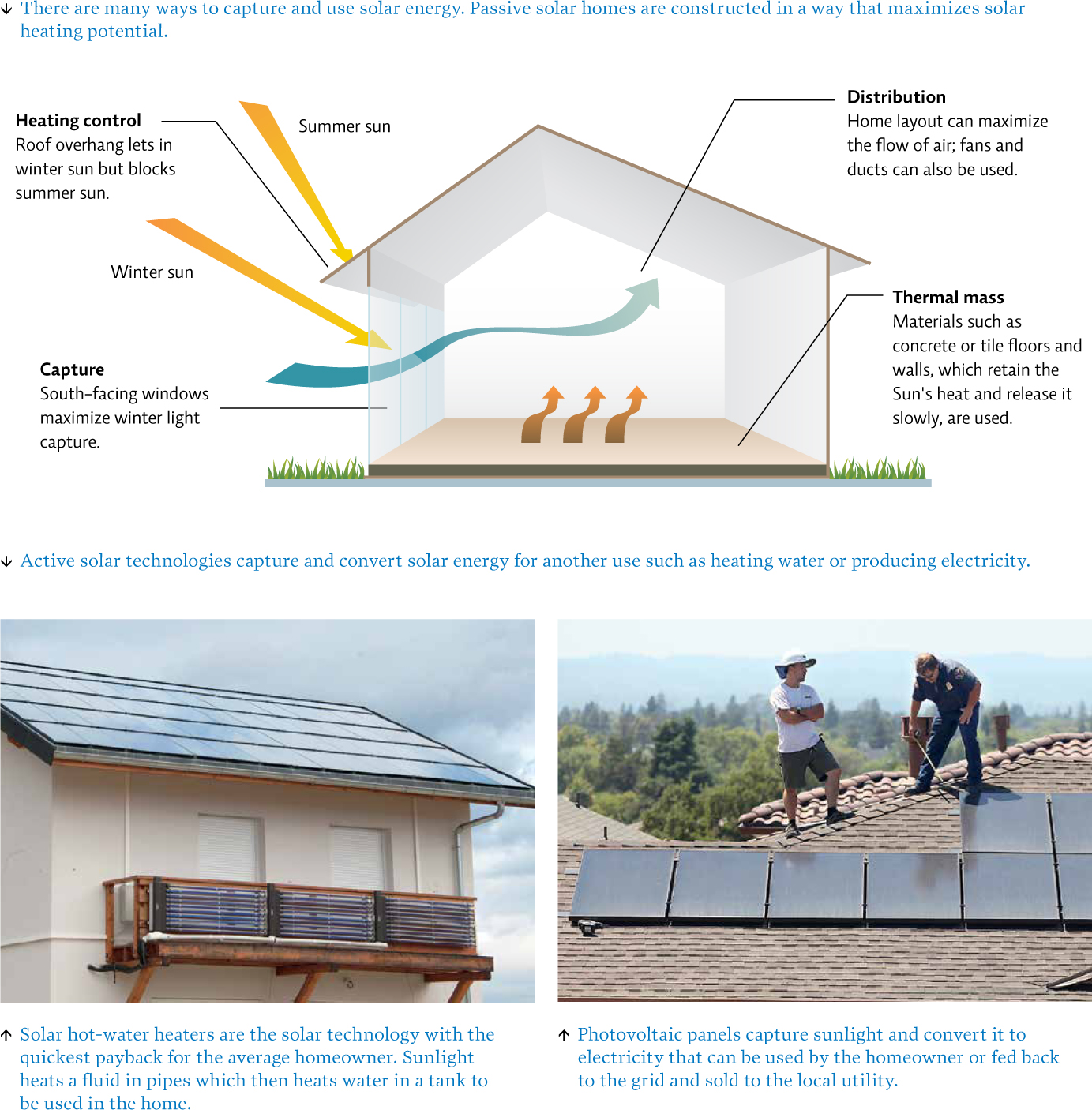24.4 The most abundant source of sustainable energy is the one that powers the entire planet—the Sun.
Each year, Earth receives a staggering amount of energy from the Sun, more than 4 million exajoules (1 exajoule is 1018, or a million trillion, joules). We use the Sun for many things—to warm our homes, heat our pools, and provide light—but new technologies allow more effective use, and even storage, of the Sun’s power. In addition to wind power, the islanders on Samsø decided to tap directly into this amazing natural resource.
Solar energy is energy harnessed from the Sun in the form of heat or light. Wind power is actually an indirect form of solar energy. Wind results from the difference in temperature between different regions of Earth, such as the poles and the equator, causing air to move from cooler regions to warmer regions.
Solar energy can be used in two ways, through active or passive technologies. Around the countryside in Samsø, homes are dotted with photovoltaic (PV) cells, also called solar cells. PV cells are active solar technologies that convert solar energy directly into electricity. If just 4% of the world’s deserts were covered in PV cells, it would supply all of the world’s electricity needs. When the Samsø renewable energy project first began, locals were able to buy PV cells for their homes at a low price subsidized by the government.
The islanders also rely on solar thermal systems, another active technology that captures solar energy for heating. At the north of the island, rows and rows of solar collectors in a field face the sky, absorbing the Sun’s rays and using that energy to heat a massive tank of water to 71°C. The hot water is then piped into 178 homes in the area for use in heating systems. Another 200 homes on the island, ones farther away from district heating plants, have individual solar collectors to capture solar energy for heat. [infographic 24.3]

441

442
Less expensive alternatives to PV cells or solar thermal systems are passive solar technologies. A greenhouse is a simple example of such a system: it captures heat without any electronic or mechanical assistance. Many energy-conscious homes are designed with passive energy in mind, incorporating strategically oriented windows to maximize sunlight in a room and dark-coloured walls or floors to absorb that light and heat the home.
Because solar energy is conceptually simple, safe, and clean, with no noise or moving parts, it is the most popular member of the renewable energy club; today, thousands of buildings around the world are powered by PV cells. [infographic 24.4]

But like wind energy, solar energy is plagued by intermittency and start-up costs. PV cells are becoming cheaper every day, but it can still take a home or business owner many years to recoup the cost of installation. Intermittency is a bigger problem. Sunlight is only available for half of each day—even less in places like Anchorage, Alaska, which see only a few hours of pale sunlight in the winter. Because of this, it is unlikely that any community will rely solely on solar power for its energy needs.
443
This is a hallmark of a sustainable energy future—because sustainable energy sources have their own strengths and weaknesses, no single source will likely meet the needs of any particular community, certainly not those of the entire world. But together, each can provide its own contribution. For example, solar is productive in daylight hours, whereas wind tends to blow harder at night; thus these two renewable sources complement each other in most places.
But in some regions, it makes more sense to tap other sources of renewable energy.